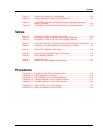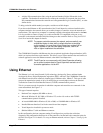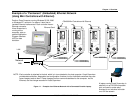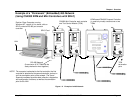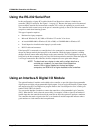
May 2002 T-38324-A Page 1-1
1. Overview
The GSE tech-motive tool CS4000 Mini Controller with Ethernet is the control component of one of
the most powerful DC electric nutrunner fastening control systems available. The system uses 100%
digital technology to ensure accurate and reliable fastening, and torque angle data acquisition.
Microprocessors in both the tool (nutrunner) and the controller enable the system to perform to levels
of accuracy while providing easy setup and operation.
The system uses the industry’s first truly “Intelligent Tools.” With this technology you no longer need
to key tool identification, calibration, angle counts, speed and other information into the controller.
You simply plug in the tool, power up the system, program the desired tightening parameters and
begin production.
A complete fastening system is made up of the CS4000 Mini Controller (with or without) Ethernet, a
tech-motive tool nutrunner (46, 66 or 116 Series) and a standard tech-motive tool cable. The CS4000
Mini Controller with Ethernet houses one Tool Control Module (TCM), with fuses and ground fault
circuit interrupt (GFCI) protection. The powerful tech-motive tool Visual Supervisor software
program is used for system setup, graphing and diagnostics.
Visual Supervisor runs on a computer attached to the controller, using:
• An Ethernet link, using an Ethernet interface card and an Ethernet RJ-45 port.
•
A 485 network link, using a Synchronous Data Link Control (SDLC) card and RS-485 port.
• An RS-232 compatible serial port.
NOTE: To find out more about using the Visual Supervisor software,
refer to the Visual Supervisor User’s Guide (part number
39-30-34823).
Receiving, Sending and Storing Data
You can use the following methods to link one or more controllers to the Visual Supervisor program
and/or I/O communications devices:
• An Ethernet link to a local area network (LAN). Here the controller has the standard Transmission
Control Protocol/Internet Protocol (TCP/IP), an Ethernet interface card, and an Ethernet RJ-45
port.
•
A 485 network link to a LAN. Here the computer uses an SDLC card inserted into a free
Peripheral Component Interconnect (PCI) slot, and an RS-485 port on the controller.
CAUTION! The 485 network and Ethernet link perform the same
function. If you set up the controller to use the 485 network,
you will not need the Ethernet link, nor vice versa.
•
An RS-232 serial link to a laptop computer using the RS-232 serial port.









